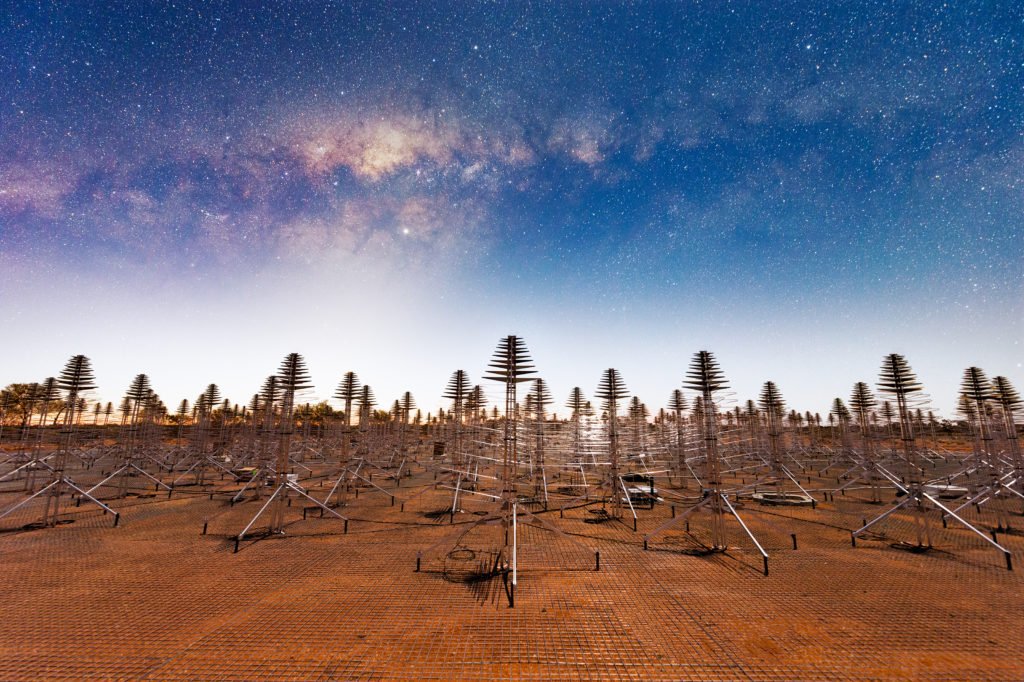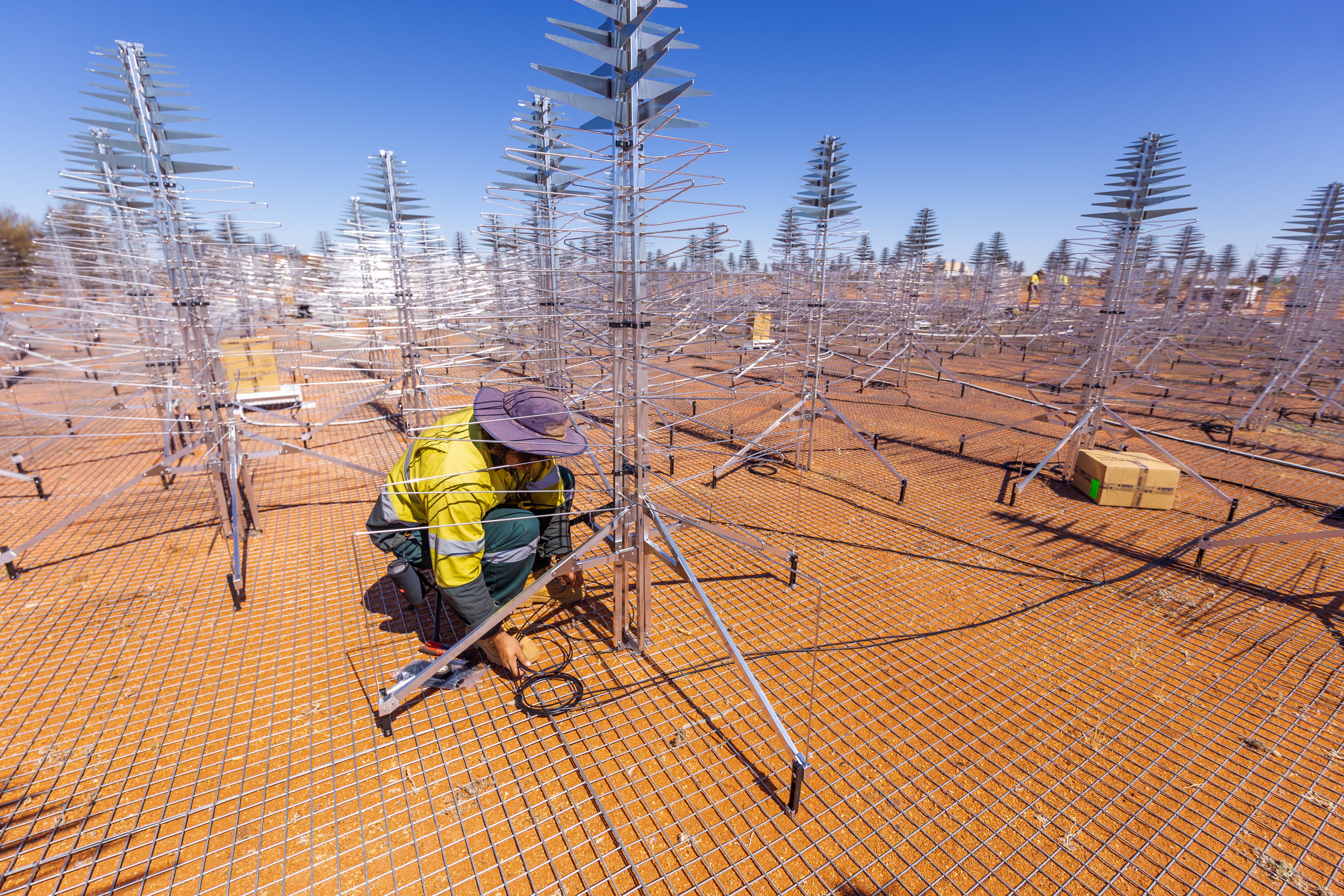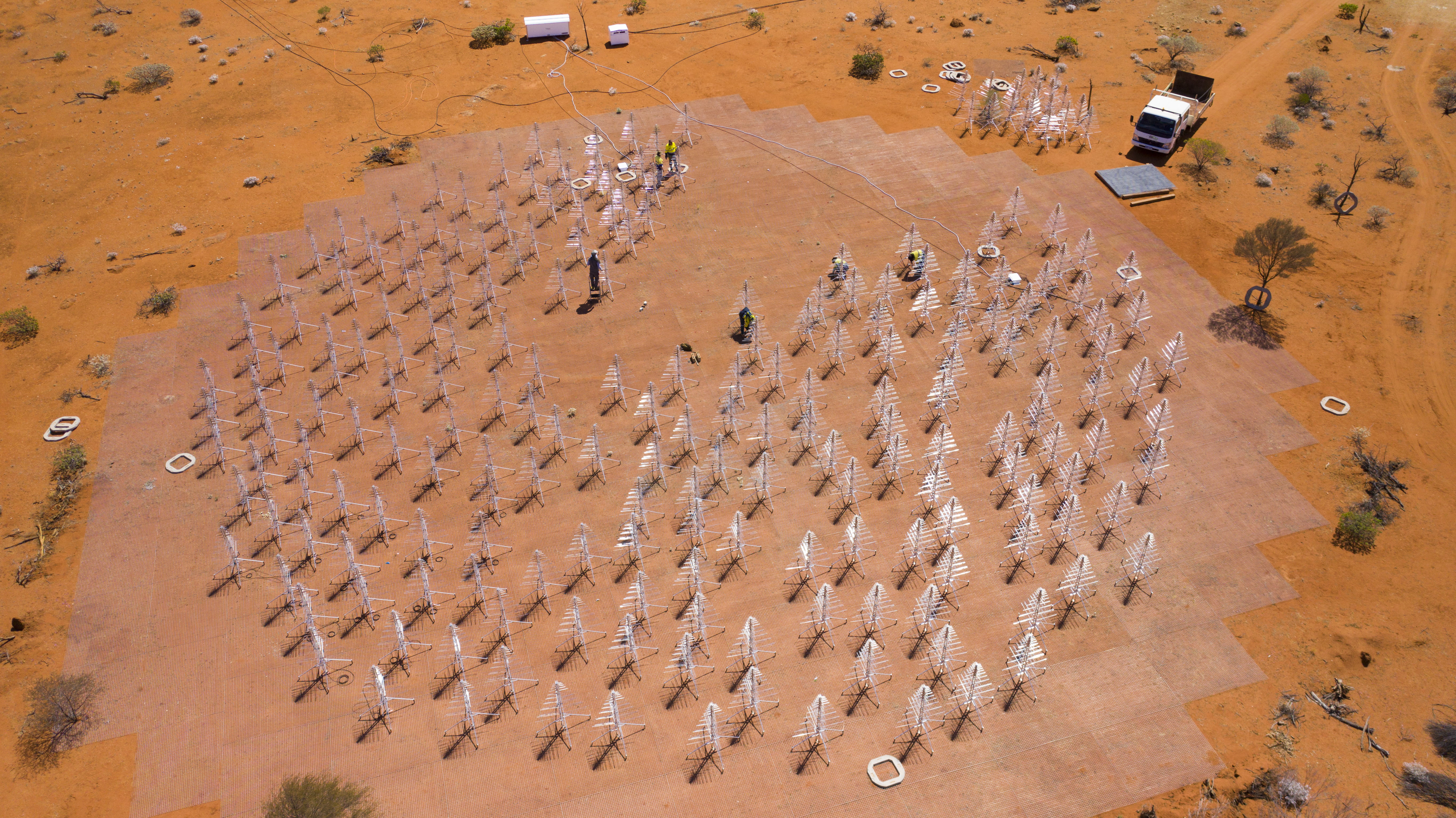
From International Centre for Radio Astronomy Research
June 10, 2020
Professor Steven Tingay (ICRAR / Curtin University)
+61 61 401 103 635
Steven.Tingay@icrar.org
Pete Wheeler (Media Contact, ICRAR)
+61 423 982 018
Pete.Wheeler@icrar.org
April Kleer (Media Contact, Curtin University)
+61 9266 3353
April.Kleer@curtin.edu.au
Following seven years of design and prototyping work, the Curtin University node of the International Centre for Radio Astronomy Research (ICRAR) has completed its preparations for the construction of the Square Kilometre Array (SKA) in Western Australia, which will begin next year.
130,000 individual radio antennas, along with associated electronics, will be built and spread over thousands of square kilometres at CSIRO’s Murchison Radio-astronomy Observatory (MRO), approximately 800 km north of Perth. This will work in tandem with an array of 197 dishes located in the Karoo in South Africa, north of Cape Town.

A 20-second exposure showing the Milky Way overhead a test array of SKA-Low antennas. Credit: Michael Goh and ICRAR/Curtin. [Never showed this design before.]
To be built by a global collaboration of 14 countries, the SKA will be one of the world’s largest science facilities, exploring the entire history and evolution of the Universe, and uncovering advances in fundamental physics.
Preparatory work in Western Australia has accelerated over the last two years through an international partnership of SKA countries (Australia, China, Italy, Malta, The Netherlands, and the UK) driven by ICRAR’S Curtin University node and Italy’s Istituto Nazionale di Astrofisica (National Institute of Astrophysics). Recently, this significant effort culminated in a successful System Critical Design Review conducted by the SKA Organisation, located near Manchester, UK, which coordinates the activities of the global collaboration.[Cannot help but notice that the U.S is missing from this list.]

Installing a test array of SKA-Low antennas. Credit: ICRAR/Curtin. [Interesting that SKA has not to my knowledge shown this design before.]
The ICRAR-Curtin University leader, John Curtin Distinguished Professor Steven Tingay said, “We have now passed the last major technical milestone before the international community commences construction of the SKA, with a budget of 1.87 billion euros over its first ten years.
“Over the last seven years, the Commonwealth Government has supported my team with $10.1M to reach this milestone, and a significant fraction of these funds has helped Western Australian industry to get ready for SKA construction contracts, especially around Geraldton and the State’s Mid-West.”
Alongside the engineering preparations, scientific preparations continue apace, with big discoveries in astrophysics led by Western Australian astronomers using the SKA precursor telescopes ASKAP and the Murchison Widefield Array (MWA) [below in template], over the last decade.

The search for the first stars 13 billion years ago, the discovery of missing matter in the Universe, and galaxy surveys of unprecedented scale feature among fundamental advances from the precursor telescopes, ready to be taken to the next level with the SKA.

An aerial view of the construction of the Aperture Array Verification System (AAVS) station—a test array of SKA-Low antennas. Credit: ICRAR/Curtin.
Both the Commonwealth Government and the Government of Western Australia have strongly supported the development of the SKA project over a significant period of time, and preparing Western Australian industry, particularly in our regions, for when construction starts is especially important in light of the impacts of COVID-19.
Beyond the COVID-19 pandemic, the SKA project will play a part in economic recovery, injecting hundreds of millions of much-needed dollars into the regional, Western Australian and Australian economies, as well as those of other SKA countries, over many years.
“All West Australians can be proud that our State is going to be the home to the SKA, one of the biggest science projects in human history,” said Western Australian Minister for Science, the Hon Dave Kelly MLA.
“Since 2009 the WA Government has provided funding of $71 million for ICRAR to attract the SKA to Western Australia and maximise benefits for the State through research, job creation, diversification of the economy and innovation,” he said.
“Through this investment, Western Australia has become a global hub for radio astronomy.”
Engineers from Australia and Italy are paving the way for the world’s biggest radio telescope—the Square Kilometre Array.
Professor Steven Tingay said Western Australia had placed itself at the forefront of international scientific research, including the readiness of Western Australian industry.
“We are looking forward to commencing SKA construction, along with our international partners, between Curtin University and The University of Western Australia via ICRAR, with CSIRO as Australia’s SKA host organisation, with our Western Australian industry partners, and with the SKA Observatory in the UK,” he said.
See the full article here .
five-ways-keep-your-child-safe-school-shootings
Please help promote STEM in your local schools.
Stem Education Coalition
ICRAR is an equal joint venture between Curtin University and The University of Western Australia with funding support from the State Government of Western Australia. The Centre’s headquarters are located at UWA, with research nodes at both UWA and the Curtin Institute for Radio Astronomy (CIRA).
ICRAR has strong support from the government of Australia and is working closely with industry and the astronomy community, including CSIRO and the Australian Telescope National Facility, <a
ICRAR is:
Playing a key role in the international Square Kilometre Array (SKA) project, the world's biggest ground-based telescope array.
Attracting some of the world’s leading researchers in radio astronomy, who will also contribute to national and international scientific and technical programs for SKA and ASKAP.
Creating a collaborative environment for scientists and engineers to engage and work with industry to produce studies, prototypes and systems linked to the overall scientific success of the SKA, MWA and ASKAP.

A Small part of the Murchison Widefield Array
Enhancing Australia’s position in the international SKA program by contributing to the development process for the SKA in scientific, technological and operational areas.
Promoting scientific, technical, commercial and educational opportunities through public outreach, educational material, training students and collaborative developments with national and international educational organisations.
Establishing and maintaining a pool of emerging and top-level scientists and technologists in the disciplines related to radio astronomy through appointments and training.
Making world-class contributions to SKA science, with emphasis on the signature science themes associated with surveys for neutral hydrogen and variable (transient) radio sources.
Making world-class contributions to SKA capability with respect to developments in the areas of Data Intensive Science and support for the Murchison Radio-astronomy Observatory.

